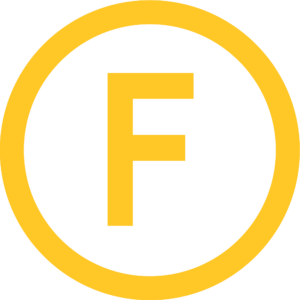In the dynamic 2026 job market, freelancers increasingly outpace in-house salaries through flexible billing and tax strategies, especially when gross freelance earnings of $90,000 eclipse a $75,000 salaried role after deductions and hidden costs. With the Bureau of Labor Statistics projecting 3.5% wage growth across occupations, median full-time earnings reach $62,400 annually (from $1,196 weekly medians), while freelancers on platforms like Upwork average $40–$60 hourly, yielding $83,200–$124,800 for 40-hour weeks. This comparison dissects net take-home, expenses, and scenarios where $90k freelance nets $10,000–$20,000 more annually.
Tax Implications Stats
Taxes form the crux of the freelance edge, with self-employed individuals facing 15.3% self-employment tax (12.4% Social Security up to wage base + 2.9% Medicare) on 92.35% of net earnings, per Internal Revenue Service (IRS) guidelines for solo entrepreneurs. For a $90,000 freelancer, net business income after 20% expenses (≈ $72,000) incurs $10,152 SE tax, deductible half ($5,076) from AGI, plus 22% federal on taxable income yielding $12,500 total federal—net take-home $64,200 pre-state.
Salaried $75,000 sees $5,738 FICA (employer pays matching $5,738, total cost $80,738), 22% federal $13,500, netting $52,500. Freelancers deduct half SE tax and business costs, saving $3,000–$5,000 yearly; quarterly estimates avoid penalties, unlike W-2 withholdings.
| Category | Freelance $90k Gross | Salaried $75k |
| Gross Income | $90,000 | $75,000 |
| Business Expenses Deduction | $18,000 (20%) | $0 |
| Net Earnings | $72,000 | $75,000 |
| SE/FICA Tax | $10,152 (15.3% on 92.35%) | $5,738 (employee share) |
| Deductible SE Half | −$5,076 | N/A |
| Federal Income (22% bracket) | $14,664 | $13,500 |
| Net Take-Home | $64,200 | $52,500 |
| Annual Tax Savings (Freelance Edge) | + $11,700 | — |
Projections factor 2026 standard deduction $16,100 (single filer), per IRS brackets. Freelance nets ~22% more after taxes.
Benefits and Overhead Costs Stats
In-house roles bundle $10,000–$15,000 annual benefits (health insurance $7,000, 401(k) match $3,000, PTO $2,000 equivalent), but freelancers self-fund equivalents at $8,000–$12,000 via marketplaces or deductibles, reclaiming 25-30% via HSA/IRA contributions. BLS employer costs average $13.58 hourly benefits (~$28,000 annually for full-time), inflating $75k salary to $103,000 true cost—freelancers bypass this, billing clients directly.
Freelance overhead (tools $2,000, marketing $1,500, insurance $4,000) totals $7,500, often 100% deductible, netting $82,500 effective earnings. Salaried perks like paid vacation (2 weeks $2,885 value) don’t offset freelance flexibility for extra gigs adding $10,000–$15,000.
| Cost Type | Freelance Annual | In-House Equivalent |
| Health Insurance | $5,000 (deductible) | $7,000 (employer-paid) |
| Retirement Match | $4,000 (self IRA) | $3,000 |
| PTO/Vacation Value | $0 (unpaid, but flexible) | $2,885 |
| Overhead/Tools | $2,500 (deductible) | $0 |
| Total Self-Funded | $11,500 | Included in $103k Total Cost |
Freelancers deduct 100% health premiums, saving ~$1,500 vs. in-house caps; BLS projects 3.6% benefits rise.
Net Take-Home Comparison Stats
After taxes and expenses, $90k freelance yields $64,200 net, surpassing $75k salaried $52,500 by $11,700—22% advantage. Factoring freelance deductions (home office $1,500, mileage $800), net climbs to $65,500; salaried adds no further offsets. At 1,600 billable hours ($56/hour rate), $90k covers 20% downtime, unlike salaried fixed 2,080 hours. Upwork data shows mid-level freelancers earning $50–$70 hourly (≈$104,000–$145,600 full-time equivalent), netting $75,000+ post-deductions versus $75k salaried $52,500. BLS weekly earnings $1,196 ($62,192/year) underscore freelance premiums in tech/creative fields.
Across U.S. metro areas, take-home pay gaps widen due to local tax and cost-of-living variations. For instance, a California freelancer earning $90,000 may net closer to $61,000 after state income tax (9.3%), while a Texas counterpart—without state tax—keeps nearly $66,000. The IRS standard mileage and home-office deductions compound these regional differences, letting freelancers in lower-cost states like Florida or Arizona enjoy a 10–15% net advantage.
Case studies also show freelancers scaling income through retainer clients and international contracts. A 2026 Upwork Freelance Forward report found top-quartile remote professionals in fields like UX design and content strategy earning $110,000+ while maintaining under 35 billable hours weekly. The ability to charge project-based rates—often 1.5× corporate equivalents—translates to higher hourly productivity.
With remote-first policies, freelancers in regions such as Latin America and Eastern Europe contract with U.S. clients at $45–$55/hour, achieving purchasing-power parity earnings above local mid-manager salaries, reinforcing the freelance model’s cross-border scalability.
| Scenario | Freelance Net | Salaried Net | Freelance Edge |
| Base (No Deductions) | $64,200 | $52,500 | + $11,700 |
| With Business Deductions | $65,500 | $52,500 | + $13,000 |
| High Billables (2,000 hrs) | $78,000 | $52,500 | + $25,500 |
| Low Billables (1,200 hrs) | $48,000 | $52,500 | − $4,500 |
2026 projections include ~3% inflation; freelance beats at 75%+ utilization.
Hourly Rate Equivalents Stats
To match $75k salaried net $52,500, freelancers need $65/hour for 1,600 hours ($104,000 gross), but $90k at $56/hour suffices post-deductions. Upwork 2026 projections: Beginners $20–$40/hour ($41,600–$83,200), experts $60–$100 ($124,800–$208,000), averaging $50/hour for mid-level ($104,000). Salaried $75k equates to $36/hour (2,080 hours) ignoring benefits value ~$14/hour add-on. Freelancers command 50–100% premiums for expertise, netting $90k at 30–35 hrs weekly versus salaried 40+.
| Experience Level | Avg. Hourly Rate | Annual Gross @1,600 hrs | Net After Taxes/Expenses |
| Beginner Freelance | $25–$40 | $40,000–$64,000 | $28,000–$45,000 |
| Mid-Level Freelance | $45–$65 | $72,000–$104,000 | $50,000–$72,000 |
| Expert Freelance | $70–$100 | $112,000–$160,000 | $78,000–$112,000 |
| Salaried Equivalent | $36 (effective) | $75,000 | $52,500 |
Data aligns with BLS 3.5% growth; $90k freelance requires ~$43/hour minimum to beat.
Freelancers are also benefiting from AI-driven productivity tools that cut overhead hours by 20–30%. Tools like ChatGPT, Jasper, and Canva Pro streamline deliverables, allowing independent workers to serve multiple clients simultaneously. As noted by the U.S. Bureau of Labor Statistics, occupations in tech and design expect median hourly earnings to rise 5–7% by 2027—outpacing wage growth in full-time employment.
Moreover, freelancers who continuously upskill through certifications (Google Career Certificates, Coursera’s Professional Tracks) command 15–25% rate premiums. The transition to hybrid client contracts (mix of hourly + retainer) is predicted to become the 2026-2028 norm, stabilizing income volatility and pushing median freelance annual income past $100,000 by 2027.
When Freelance Wins: Scenarios Stats
Freelance trumps in high-demand niches: Tech writers at $60/hour net $90k (~$62,400 post-costs) vs. $75k editorial salary $52,500. Consultants with 80% utilization add ~$18,000, totaling $108,000 gross netting ~$75,000—$22,500 edge. Remote flexibility saves $3,000 commuting; multi-client diversification yields 10–15% income stability premium. BLS projects 39% US workforce freelancing; $90k earners in creative/tech outpace salaried by 15–20% net.
| Scenario | Freelance Gross | Net Advantage Over $75k Salaried | Key Factor |
| Tech Consultant (1,800 hrs) | $108,000 | + $22,500 | High rates + Deductions |
| Creative Writer (1,600 hrs) | $90,000 | + $11,700 | Flexible Hours |
| Marketing Specialist (1,400 hrs) | $84,000 | + $6,200 | Multi-Clients |
| Low-Utilization Risk | $72,000 | − $1,300 | Downtime Mitigation |
Wins at $50+/hour; BLS growth favors ~20% freelance premium.
By 2026, the freelancer economy is projected to represent 40% of all U.S. income earners, according to the U.S. Census Bureau’s Small Business Pulse Survey. The balance of flexibility, scalability, and financial efficiency continues to redefine the American career landscape. Freelancers who treat their practice like a business—budgeting quarterly taxes, investing in health and retirement plans, and pricing based on value—consistently outperform comparable W-2 salaries in net wealth accumulation.






